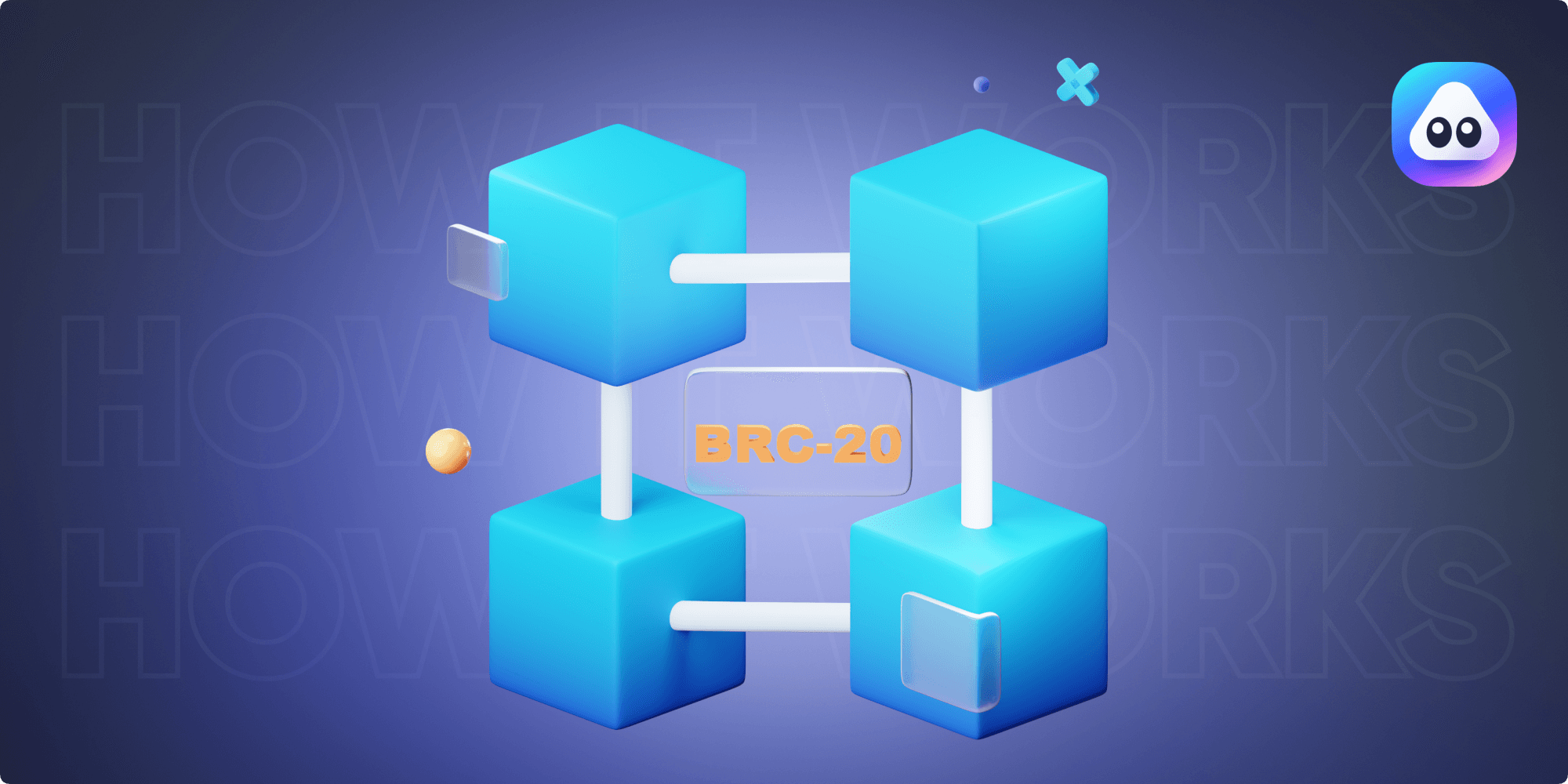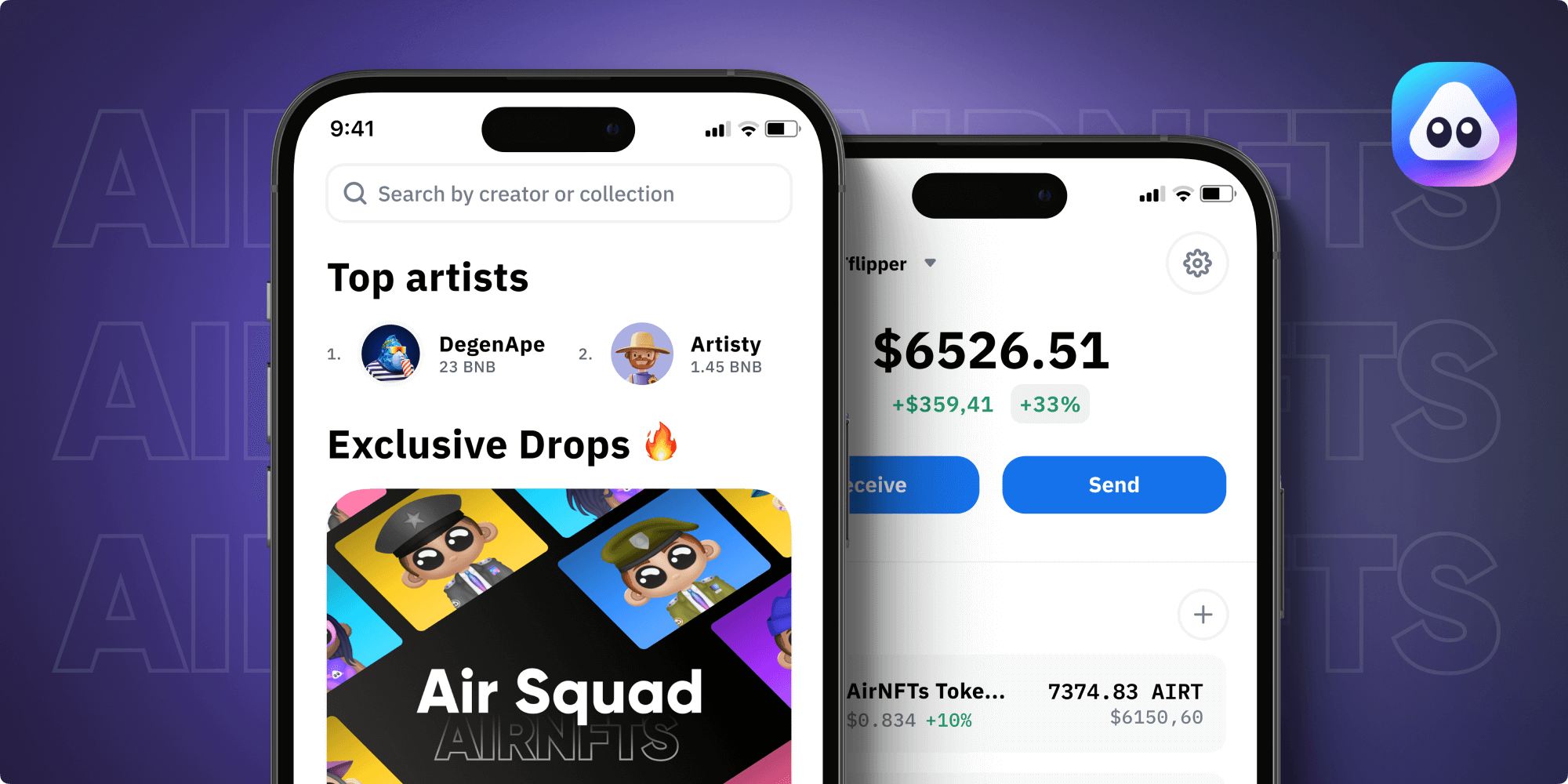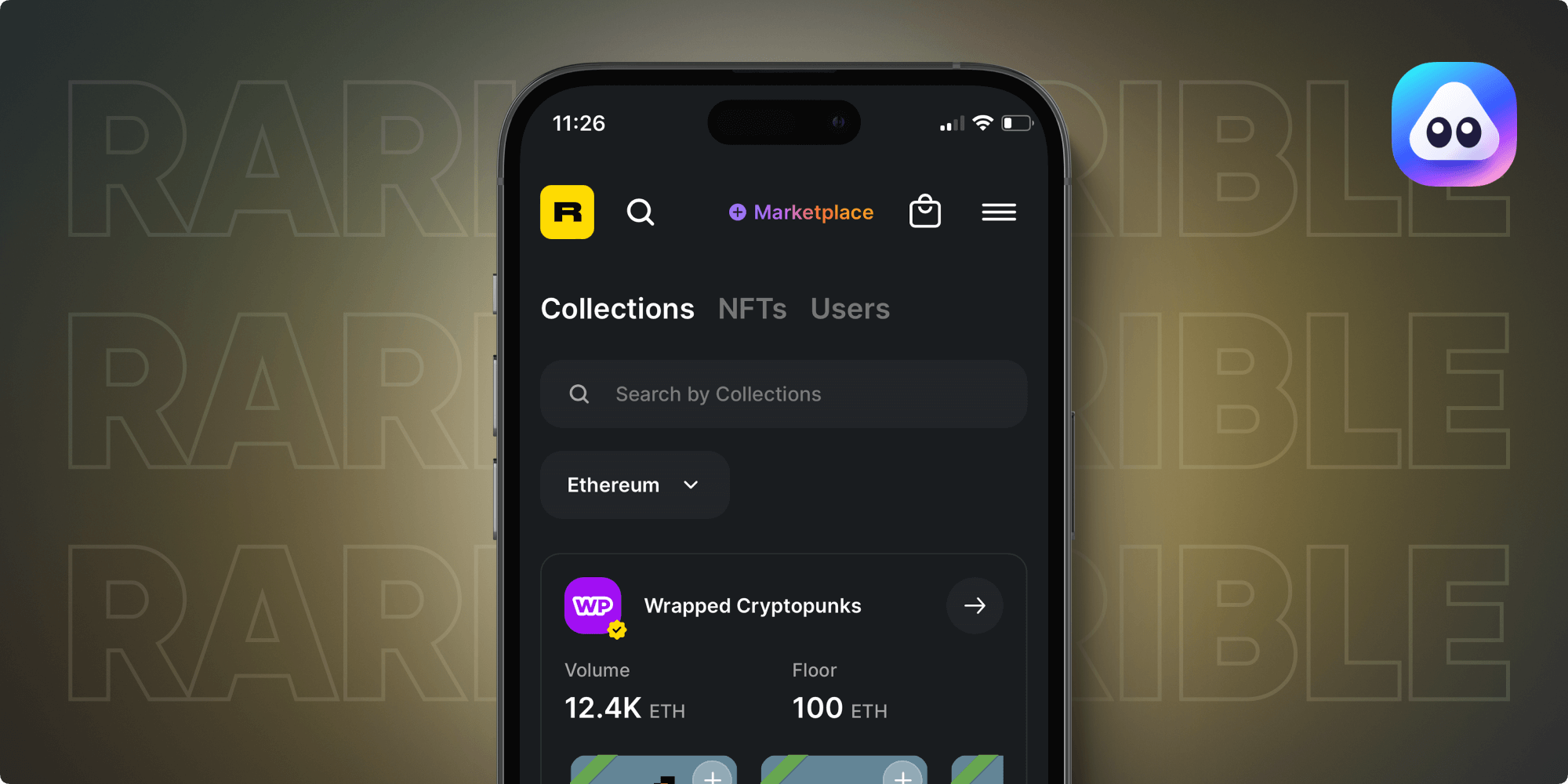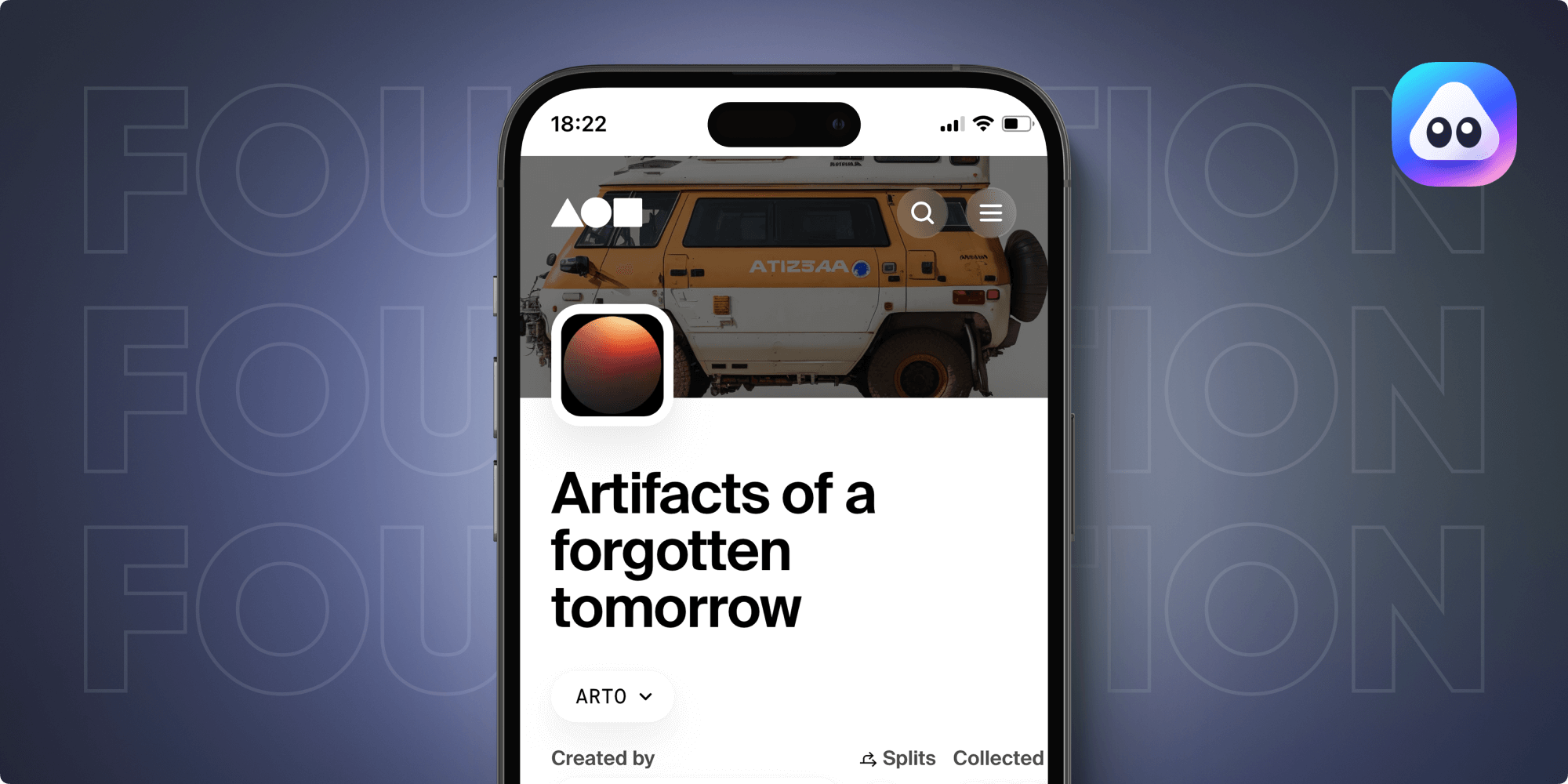What are NFTs and How do they work?
A comprehensive guide to NFTs, how NFTs work, examples of NFTs, and more.
April 29, 2023

If you've been following the cryptocurrency world, you may have heard the term "non-fungible token" or NFT. In recent years, NFTs have become popular in the digital art world and beyond. But what exactly is an NFT, and how does it work? In this article, we'll take a deep dive into the world of NFTs, including what they are, how they work, and why they have become so popular.
What does NFT mean
NFTs, or Non-Fungible Tokens, are a type of digital asset that is unique and non-interchangeable. Unlike regular cryptocurrencies like Bitcoin or Ethereum, which are fungible, NFTs cannot be exchanged for each other on a one-to-one basis. Each NFT is unique and represents a specific asset, such as a piece of art or a digital collectible.
NFTs are stored on a blockchain, just like other cryptocurrencies. The most popular blockchain for NFTs is Ethereum, but other blockchains like Binance Chain (formally Binance Smart Chain), Solana, and Flow are also starting to gain popularity.
How do NFTs work?
NFTs are created using smart contracts, which are self-executing contracts with the terms of the agreement between buyer and seller being directly written into lines of code. These smart contracts are stored on the blockchain and are publicly visible.
When someone creates an NFT, they include specific details about the asset it represents, such as its name, description, and image. The NFT is then minted on the blockchain, creating a unique digital certificate of ownership for that specific asset. This certificate of ownership is stored on the blockchain and can be transferred between owners just like regular cryptocurrency.
Advantages of NFTs
NFTs offer numerous benefits that make them valuable in various fields, from art to real estate. Here are some of the most significant advantages of using NFTs:
1. Market Efficiency
One of the most apparent benefits of NFTs is their ability to streamline sales processes and eliminate intermediaries. By tokenizing a physical asset, NFTs facilitate direct transactions between buyers and sellers, removing the need for agents. For example, NFTs representing digital or physical artwork on a blockchain can allow artists to connect directly with their target audiences and sell their works without the assistance of agents.
2. Investing
NFTs can also be used to simplify investing in various assets. For instance, Real estate is an asset that can be tokenized using NFTs. A property can be divided into multiple sections, each with different characteristics. For example, a lakeside unit could be priced differently from one closer to the forest. By assigning an NFT to each portion of the property, real estate trading can be simplified by incorporating relevant metadata into the unique NFTs.
3. Ownership Representation
NFTs can represent ownership in a business, similar to stocks. Stock ownership is already tracked via ledgers that contain information such as the stockholder's name, date of issuance, certificate number, and the number of shares. Using NFTs and blockchain instead of a stock ledger can automate ownership transfer, making it easier to transfer business shares.
4. Security
NFTs can also enhance security, particularly when it comes to identity protection. Personal information stored on an immutable blockchain cannot be accessed, stolen, or used by anyone without the proper keys. Therefore, NFTs can serve as a secure means of storing sensitive information.
5. Democratization of Investing
NFTs can democratize investing by fractionalizing physical assets like real estate and artwork. Dividing a digital real estate asset among multiple owners is much easier than doing the same with a physical one. By purchasing a share of a painting or other expensive art, multiple individuals can collectively own a fraction of the physical artwork, increasing its worth and revenues.
Challenges of NFTs
NFTs face several challenges, including environmental impact, legal and regulatory issues, and technical limitations. The energy consumption required to create and manage NFTs is a significant concern. There are also legal and regulatory issues surrounding the ownership and trade of NFTs and technical limitations such as scalability and interoperability.
Another challenge of NFTs is their potential for speculative bubbles. Because NFTs are a new and rapidly evolving market, prices can be highly volatile. Some NFTs have sold for millions of dollars, leading some to speculate that the market is in a bubble that will eventually burst.
What are NFTs being used for?

One of the most famous use cases for NFTs is Cryptokitties, digital cats with unique identities on the Ethereum blockchain. Each cat has a different value and can "breed" with others to create new offspring. Fans spent $20 million worth of ether on Cryptokitties within weeks of its launch, with some enthusiasts spending over $100,000. The Bored Ape Yacht Club is another NFT project that has gained attention for its high prices, celebrity following, and theft of some of its 10,000 NFTs.
NFTs can be used for anything that requires proof of ownership or authenticity, such as trading cards, real estate titles, photography, patents, music, sports, etc. NFTs can also be used for in-game items and virtual real estate. This allows gamers to own unique and rare in-game items that can be bought, sold, and traded on NFT marketplaces, just like physical collectibles. It also provides a new revenue stream for game developers.
In addition, NFTs can be used for charity fundraising. Some charities have created NFTs that represent specific donations or fundraising campaigns. By buying an NFT, donors can show their support for the cause while also receiving a unique digital asset.
The future of NFTs
Despite the challenges facing NFTs, they have enormous growth potential. The increasing popularity of NFTs is expected to continue, with more industries adopting them. NFTs could also be integrated with other technologies, such as augmented reality and virtual reality. The evolution of NFT standards is also expected to facilitate the growth and adoption of NFTs.
How to buy and sell NFTs?
NFTs are purchased using cryptocurrency such as Ether (ETH). Therefore, owning cryptocurrency– and storing it in a digital wallet is the first step. You can buy NFTs via any online NFT marketplaces, including AirNFTs, OpenSea, Rarible, or SuperRare.
Best NFT Marketplaces in the Game
There are many NFT marketplaces where you can buy and sell NFTs. Here are a few of the most popular:
1. AirNFTs
AirNFTs is the perfect multi-chain NFT marketplace for those looking for a simple and affordable platform. With prices starting at just $1, users can easily create, buy, and sell NFTs across Ethereum (ETH), Binance Smart Chain (BSC), Polygon (MATIC), and Fantom (FTM). Additionally, AirNFTs offers a personalized experience with Defi options like staking, a referral program, and access to custom-made NFTs. As a bonus, we support our users by promoting their work, giving them even more exposure to the NFT community.

2. OpenSea
OpenSea is one of the largest NFT marketplaces with over 4 million items listed for sale.

3. Rarible
Rarible is a platform for buying and selling unique digital assets.

4. Nifty Gateway
Nifty Gateway is another popular NFT marketplace for limited-edition digital art.

5. SuperRare
SuperRare is a curated NFT platform for high-quality digital art.

6. Foundation
Foundation an invite-only platform for buying and selling NFTs

Conclusion
While they have some challenges, NFTs have already significantly impacted the world of digital art and beyond. Whether you're an artist looking to monetize your work or a collector looking for unique digital assets, NFTs offer much potential.
Want to explore more about NFTs? Look no further than AirNFTs - one of the ultimate destinations for collectors and creators. Discover a wide range of unique digital assets on BSC, ETH, Polygon, and Fantom.
